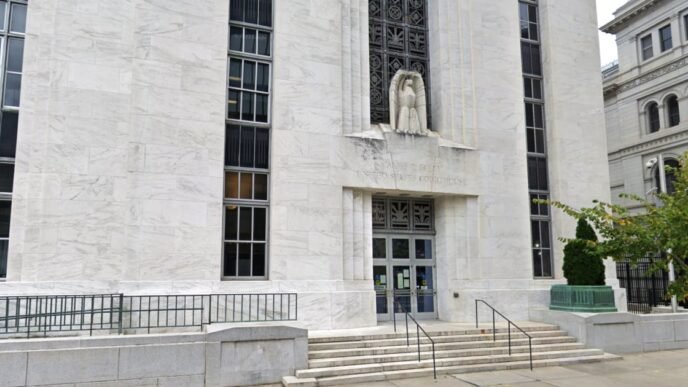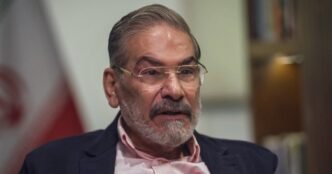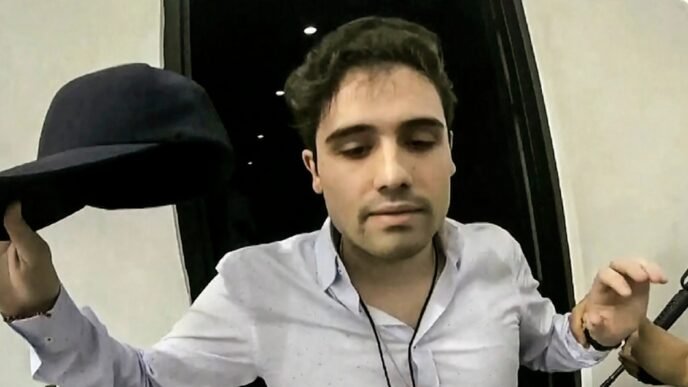Under the NFL’s sal cap, where all position groups are not compensated equally, value revolves around the quarterback — how well a player plays the position, protects it, or stops it.
The Cincinnati Bengals have two of the league’s best at those skills. Yet two years after the team was quick to lock up quarterback Joe Burrow to a long-term contract extension in 2023, its reticence to hand a similarly lucrative extension to edge rusher Trey Hendrickson, despite leading the NFL in sacks last season, has led to an offseason standoff.
The impasse, which Hendrickson told reporters this week has become “personal,” is at odds with the demand for disruption along the defensive line that has seen top pass rushers be paid handsomely.
In March, the Cleveland Browns agreed to pay Myles Garrett an average of $40 million per year as part of a long-term contract, the Las Vegas Raiders agreed to a three-year deal that will pay Maxx Crosby an average of $35.5 million, and in Houston, Texans defensive end Danielle Hunter earned a one-year extension worth $35.6 million.
If the pause in Hendrickson’s negotiations stem from concerns about whether he can replicate his success from last season, when he recorded a career-high 17.5 sacks, age also didn’t stop the deals for Crosby (27), Garrett (29) or Hunter (30).
Hendrickson, 30, is under contract through next season, and will earn around $15.8 million, but has said he will not play under his current contract if a new deal is not reached. Though being under contract reduces some of his potential leverage, the team also relinquished some of its own when it opted not to trade Hendrickson for players or future picks before the NFL draft.
The stalemate has led to a public airing of frustrations, one the rest of the league is observing closely for the potential ripple effect that would come if Cincinnati ultimately would rather trade Hendrickson than pay him.
According to Hendrickson, the team has not been in communication about a deal since April’s draft — when Cincinnati selected a player at his same position, signaling his potential successor. Tensions grew after the Bengals’ coach apparently texted Hendrickson warning of fines if he did not appear for the team’s mandatory offseason minicamp.
It also did not help that in early April a Bengals executive vice president told the Cincinnati Enquirer that Hendrickson “should be happy at certain rates that maybe he doesn’t think he’d be happy at.”
“I think some of it is on him to be happy at some point, and if he’s not, you know, that’s what holds it up sometimes.”
Hendrickson has called those comments “frustrating.”
It is not the first time the Bengals have drawn the ire from their own players. When the NFL Players Association surveyed its membership to produce its annual grades of all 32 teams, the Bengals came in 24th, earning an F-minus grade for its treatment of families and an F grade for its dining and food options for players. According to the union, the Bengals are the only team not to offer either daycare or a specified room for players’ families to gather on game days.
This offseason, the Bengals have spent big to bring back some of their stars, such as receivers Ja’Marr Chase, who became the highest-paid non-quarterback in the league, and Tee Higgins. But those deals did not come together quickly, and “prior to the (Febru) combine, I didn’t feel like there was a chance in hell to get both of them to stay in Cincinnati,” the receivers’ agent, Rocky Arceneaux, told the Enquirer in March.
During an interview at the Super Bowl in Febru, Burrow applied public pressure on the team to sign teammates including Chase, Higgins and Hendrickson.
“We have the cap space to get it done,” Burrow said. “Trey, Tee, Ja’Marr, Mike (Gesicki), we all want to stay together.”
Garrett’s record $160 million contract in Cleveland, which came only weeks after he publicly requested the team to trade him, was evidence that an unhappy partnership could be salvaged by a sweetened deal. When Hendrickson showed up to watch a Bengals practice this week from the sideline, he was asked by beat reporters whether he wanted to still stay with the Bengals.
“That’s a tough question, too, because you try not to let the business become personal,” Hendrickson said. “I think over the last week or so, it’s become personal unfortunately, and when there’s a lack of communication in any relationship, whether it’s a business or personal relationship, lack of communication leads to animosity, and that leaves my narrative only to me with no clear direction.”













